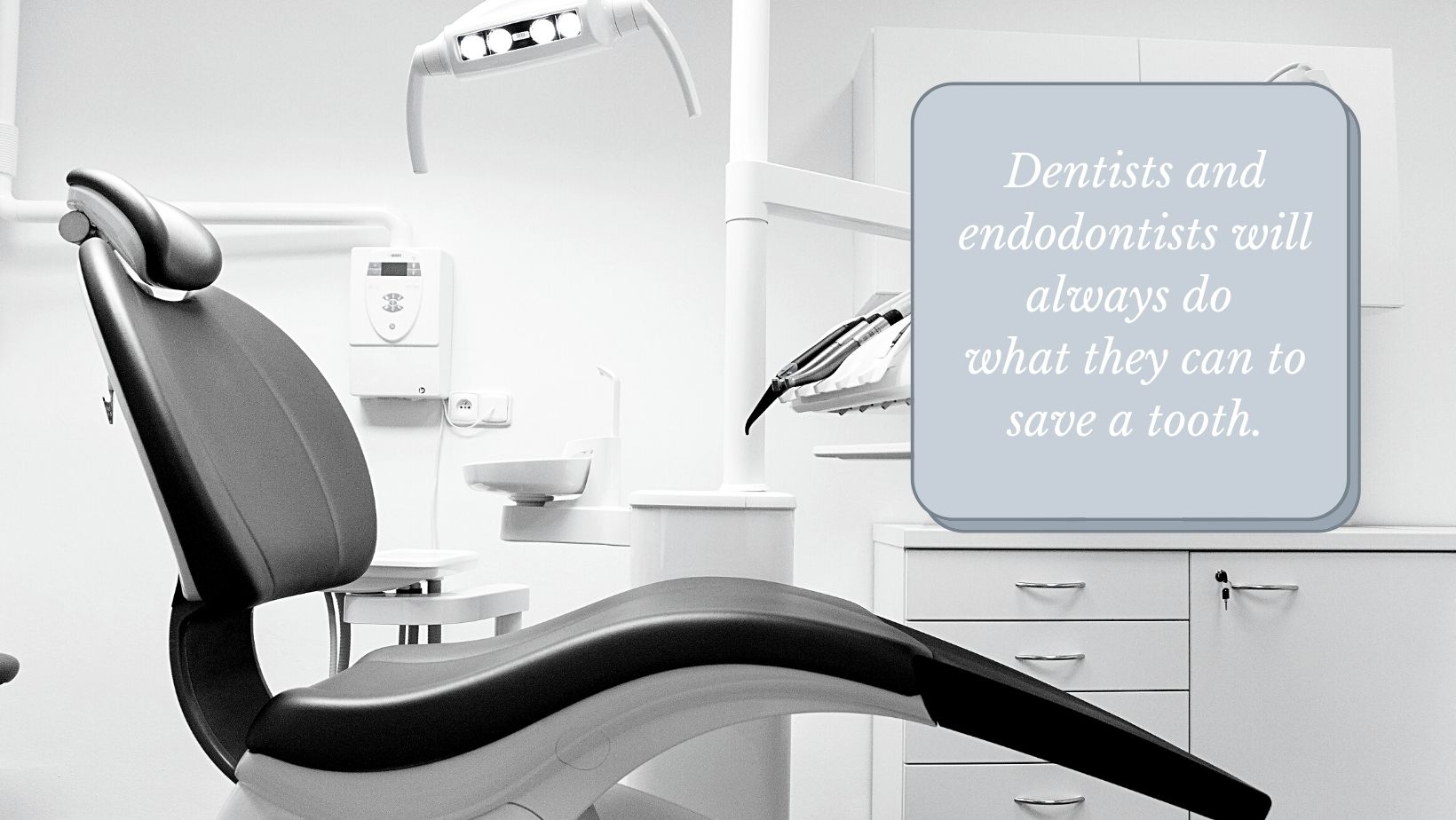People do not always think of teeth as alive, but they are. At the center of each tooth is an area called the pulp chamber. Nerves and blood vessels extend through the path known as the root canal to the pulp chamber, bringing the tooth sensation and nourishment.
When the nerves and blood vessels at the center of a tooth die, dentists call it dental pulp necrosis. To save the tooth, dentists recommend removing the dead tissue. Not doing so can lead to complications, such as serious infections and abscesses. These can result in losing the necrotic tooth. Worse, they can endanger the rest of the patient’s teeth and overall health as well.
How Does Dental Pulp Necrosis Develop?
Dental pulp necrosis is the final stage of an infection inside the tooth called pulpitis. Pulpitis most often starts with tooth decay or a cracked or broken tooth. Too much drilling into a tooth or other invasive procedures can also be a cause. Any of these conditions can allow bacteria to get into the pulp chamber, allowing an infection to grow.
A small cavity or crack might only affect the hard outer enamel of the tooth, or the layer beneath it called the dentin. These are easily fixed with a simple dental filling. But if the problem is not found and repaired in time, eventually bacteria will eat away at the tooth until it reaches the pulp chamber.
Pain and swelling is a sign that healthy pulp inside the tooth is trying to fight off the infection. The condition is reversible at first, but if left alone, irreversible pulpitis sets in. At this point, the tooth is still alive. Without treatment, however, the infection deprives the nerve of oxygen and pinches off the blood flow. Eventually the tooth dies.
Signs and Symptoms of Dental Pulp Necrosis
Reversible pulpitis shows up as pain when biting down and a sensitivity to food and liquid that is hot, cold, or sweet. Extreme, constant pain is often an indication that the pulpitis has progressed to the irreversible stage. Symptoms can also include a fever, swollen lymph nodes beneath the jaw, bad breath, or an unpleasant taste in the mouth. A patient might also develop an abscess on the gum near the affected tooth.
Patients might be relieved when the tooth stops hurting. But pain is a sign that the nerves are still working. When it stops, it could be a sign that the nerve is dead and the tooth is necrotic.
The discomfort rarely stops completely, though, because the infection is still there. The area around the tooth can still be inflamed and there might be a painful abscess. The infection can also spread to the jaw, sinuses, or gums.
Teeth with dental pulp necrosis often become discolored. They often turn yellow first. Over time, they will darken to gray, brown, or even black.
Diagnosing Pulp Necrosis

Based on the symptoms listed above, a dentist might suspect pulpitis or dental pulp necrosis. A full dental exam with x-rays will show if there is a cavity or a break in the tooth.
If the hole or crack appears to go all the way to the root of the tooth, the next step is to determine if the pulp is still alive. This will help the dentist decide the best way to fix the problem. There are three methods that are typically used to find out if a tooth has pulpitis or necrosis:
Cold Testing. Dentists use a refrigerant spray on a cotton swab and hold it against the tooth. A healthy tooth will feel the cold, but it will go away when the swab is removed. If the cold causes pain that lingers more than 10 seconds after the swab is removed, that is a sign of pulpitis. If the tooth does not notice the cold at all, it is most likely necrotic.
Heat Testing. Dentists use the same technique and measure the results in the same way as in cold testing. They first isolate the tooth with a piece of latex called a dental dam, then apply hot water.
Electric Pulp Test (EPT). The dentist applies an electrical current to the tooth. Using a scale that goes from zero to 80, the test measures the tooth’s viability. Any sensation indicates the nerves are alive. No response, even at the highest setting, indicates dental pulp necrosis.
Treatment For a Necrotic Tooth
When a dentist diagnoses pulpitis or dental pulp necrosis, they will often refer the patient to an endodontist. Endodontists are dental professionals who deal with treatments involving the interior of teeth. They specialize in root canal procedures, which is the most common treatment of dental pulp necrosis.
During a root canal procedure, the endodontist drills into the tooth and performs a pulpectomy, which simply means cleaning out the dead or infected pulp. They then fill the hole left behind, and cap the tooth off with a crown. Root canal procedures have a reputation for being painful, but they are actually quite routine and not much worse than getting a filling.
Dentists and endodontists will always do what they can to save a tooth. If the tooth is too deteriorated to fix, they might recommend an extraction. Pulling the tooth is a last resort, and it is best to replace it with a dental bridge or an implant.
Do Not Ignore Dental Pulp Necrosis
No matter what treatment a dentist recommends, it is important to take care of dental pulp necrosis. Just because a tooth is dead does not mean that the problems are over. The infection that killed the nerves and blood vessels can spread to other parts of the mouth and even travel throughout the body.
The best way to prevent necrosis is to stop dental infections before they have a chance to damage the pulp. This means having cavities filled as soon as possible, ideally when they are only on the surface enamel. A chipped or cracked tooth should be fixed right away too. Any place on a tooth where bacteria can get beyond the enamel and dentin can affect the pulp.
By identifying problems early, dentists can provide treatment before pulpitis or dental pulp necrosis take hold. Keep on top of dental health by visiting a dentist for a checkup twice a year, and contact them whenever you feel discomfort or notice changes in your teeth.
Use our online appointment tool to find a dentist in your area today.


